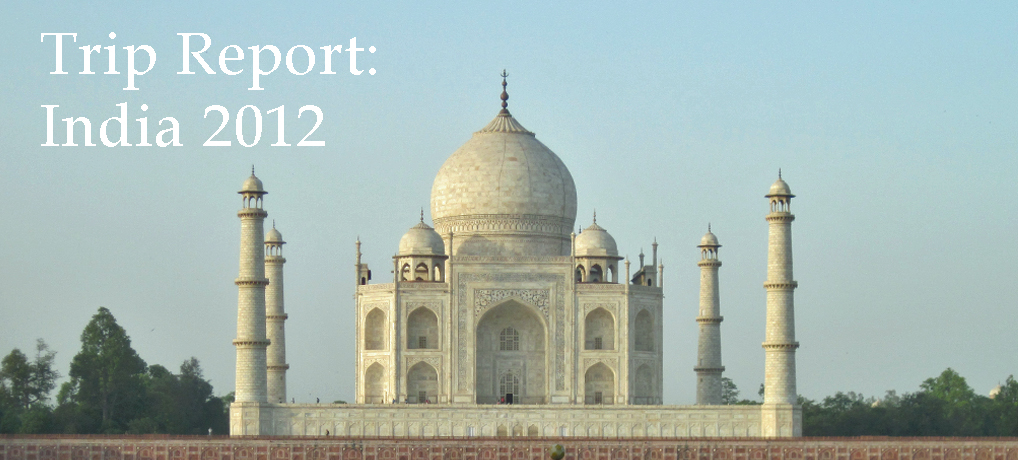 This trip report doesn’t involve the kids, so I have hesitated to post it, but in the end I decided — who doesn’t want to hear about a trip to India? Nobody, that’s who.
This trip report doesn’t involve the kids, so I have hesitated to post it, but in the end I decided — who doesn’t want to hear about a trip to India? Nobody, that’s who.
As soon as we found out we were moving to Beijing, a trip to India was at the top of my must-do list. But because of the difficulty of finding a babysitter when your kids’ grandmas, grandpas, aunts and uncles all live 3000-6000 miles away, we were only able to devote a short four days to the trip. Because of this, and because India seemed a great deal more intimidating than, say, Europe, we decided to do something we never do and book a guided tour.
We booked a private tour of the Golden Triangle (Delhi, Agra and Jaipur) through Elegant Journeys, and it was the best move we could have made. I definitely wouldn’t have wanted to try our first trip to India on our own. Our driver and guides led us through our whirlwind tour (we have to see EVERYTHING in only three days!) with a maximum of efficiency and a minimum of hassle. Highly, highly recommended.
We arrived in the middle of the night, and started our adventures in Delhi next morning at the Red Fort. The 17th century fort was built to protect the Shah Jahan and his court from invaders. The original sandstone walls still stand, in their amazingly intricate designs, but 75% of the structures inside were destroyed when the British took the fort in the 1800s. A few marble buildings still stand, but most of the interior still consists of British military barracks and structures.
After several hours exploring the fort, we visited the largest mosque in India, the Jama Masjid. This amazing mosque was also built by Shah Jahan in the 1650s, and is an island of quiet and calm in the middle of the crazy noise and bustle of Delhi. The architecture is distinctive, with the Shah’s trademark blend of red sandstone and marble, and was incredibly impressive and HUGE.
I had tried hard to pack clothes that would be appropriate for Indian temples and restaurants (note my trusty scarf), but my outfit still wasn’t quite conservative enough for the mosque, so they kindly supplied a wrap.
After the mosque, we visited the tomb of the Mahatma Gandhi at Raj Ghat. Incredibly simple and moving, the memorial was unexpectedly poignant. A simple black marble platform marks the spot where Gandhi was cremated, and an eternal flame burns above it. The memorial seems fitting in its simplicity, and though Gandhi reportedly didn’t want any kind of memorial at all, I think the world is richer for a place to remember such a beautiful man.
After a quick lunch at our hotel, the afternoon was spent driving to Jaipur. (We break the rules flagrantly and without shame when the kids aren’t with us.)
The next morning in Jaipur started at the incredible Amber Palace. This amazing fort was built in the 16th century, and most of the buildings inside are still intact. This huge complex includes gardens, baths, the harem section and government structures. The climb up to the fort is long and steep, so we opted for some transportation.
The buildings within the fort are gorgeous, courtyards and gardens surrounding white marble and inlaid stone buildings, but my personal favorite was the Mirrored Palace, with tiny mirrors placed within the walls and ceiling which would reflect candlelight and turn the room into “a glittering jewelbox.”
The afternoon was spent visiting the City Palace, which is still a Royal Residence, viewing the collections of art, weapons and clothes from the Mughal emperors and exploring their elaborate private rooms. My favorite details were the giant silver urns that Maharaja Sawai Madho Singh used to transport Ganges water for him to drink during his visit to England for Edward VII’s coronation (thus proving that Americans are not the only traveling water-snobs) and the delightful discovery that one Jaipur Maharaja was such a brilliant polo player that he led his team to a world championship victory. How can you not love the idea of a current world leader being a sports hero too? David Cameron leading a team to the World Cup? Barack Obama as a championship NBA player? Wonderful.
After the City Palace, we made a stop at the Jantar Mantar Observatory, built in the early 1700s. This is actually an outdoor site with a collection of dozens of highly specialized devices for observing specific phenomena, and studying the heavens in extraordinary detail. These structures are huge, and still amazingly accurate–the giant sundial is accurate to within two seconds.
Dinner that night was a delightful experience. Because it was the off season, there were only six people staying in our hotel of about 300 rooms, so when we went down to dinner in the restaurant, we had the place to ourselves. Providing the entertainment that night were a sitar player and a drummer. We sat front and center at our table for two, while they played just for us. Incredibly awkward and incredibly hilarious. They even asked if we had any requests. You have no idea how much I wished I knew the name of even one classical Indian song to request.
In retrospect, I probably could have just requested my favorite Bollywood hits, since later on in the meal they favored us with Frère Jacques, which I’m pretty sure is not an Indian folk song.
The next morning was spent driving to Agra. On paper all this driving seemed like it was going to be boring and frustrating, but it actually turned out to be one of the more memorable parts of this trip. Our driver was incredibly nice and experienced, and obviously knew exactly what American tourists want to see–every time a camel or cow wandered near, he slowed to a snail’s pace to let us get pictures and pointed out other “normal” sites like monkeys, women harvesting crops, buses topped with dozens of “ceiling riders”, etc. Plus, driving in India may be many things, but it is never, ever boring. Indian drivers make Chinese drivers look cautious.
But on our way to Agra, we stopped at Fatehpur Sikri, which is another site demonstrating that India is totally amazing. There is just so much STUFF to see, that a mind-bogglingly incredible spot like this desert city is totally unknown to Americans, even well-informed ones.
Fatehpur Sikri was founded in the late 1500’s by the Mughal Emperor Akbar, who decided to move his city capital from Agra 23 miles away to the middle of the desert. His builders spent the next 15 years constructing his dream city, creating palaces, harems, courts, mosques, even a special giant chessboard so he could play chess with living pieces–concubines or slave girls who had to stand in for games lasting up to three days. Poor girls.
After 15 years of continuous labor to complete the city, the emperor moved his entire court there . . . for 14 years. Realizing the difficulty of providing water to a large city in a desert (he couldn’t figure that out during construction?) the emperor shifted his capital again, to Lahore, and left the incredibly elaborate sandstone buildings a ghost town in the desert.
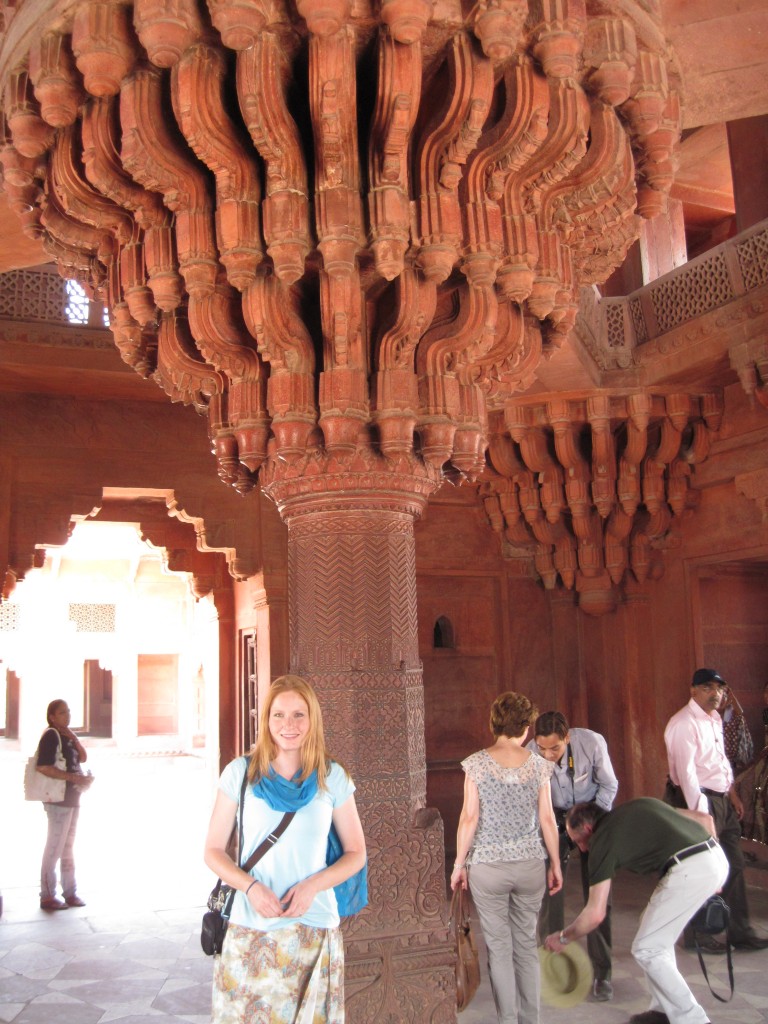
The emperor’s throne was on top of this amazing column–hard for assassins to reach him. He was no dummy.
After a few hours at this astonishing site, we were back in the car for the rest of the drive to Agra and my personal lifelong dream–the Taj Mahal!
But first, we visited the Agra Fort, another red stone giant built in the 1400s by the Mughal emperors. This fort contains several distinct areas, constructed by the sons of the original builder, which provide a fascinating look into the shifting styles and trends in architecture. The outside and first courtyards of the fort are built of massive blocks of red sandstone. The sheer scale of the place is incredible.
Inside, there are obvious shifts as you move from areas constructed by first several Shahs and those built by the Shah Jahan (most famous as the builder of the Taj Mahal). Jahan’s buildings are of white marble, and usually inlaid with precious stones and gold.
The most beautiful apartments are those he built for his wife, Mumtaz Mahal. These apartments were similar to the style that would be used in her monument, the Taj, after her death, and it was here, ironically, that the Shah’s son would eventually confine his father in “house arrest” after deposing him. The Shah would spend his last 8 years gazing out over the river at the monument he had built his beloved wife, from her own balcony, but unable to visit her.
Romantic, no?
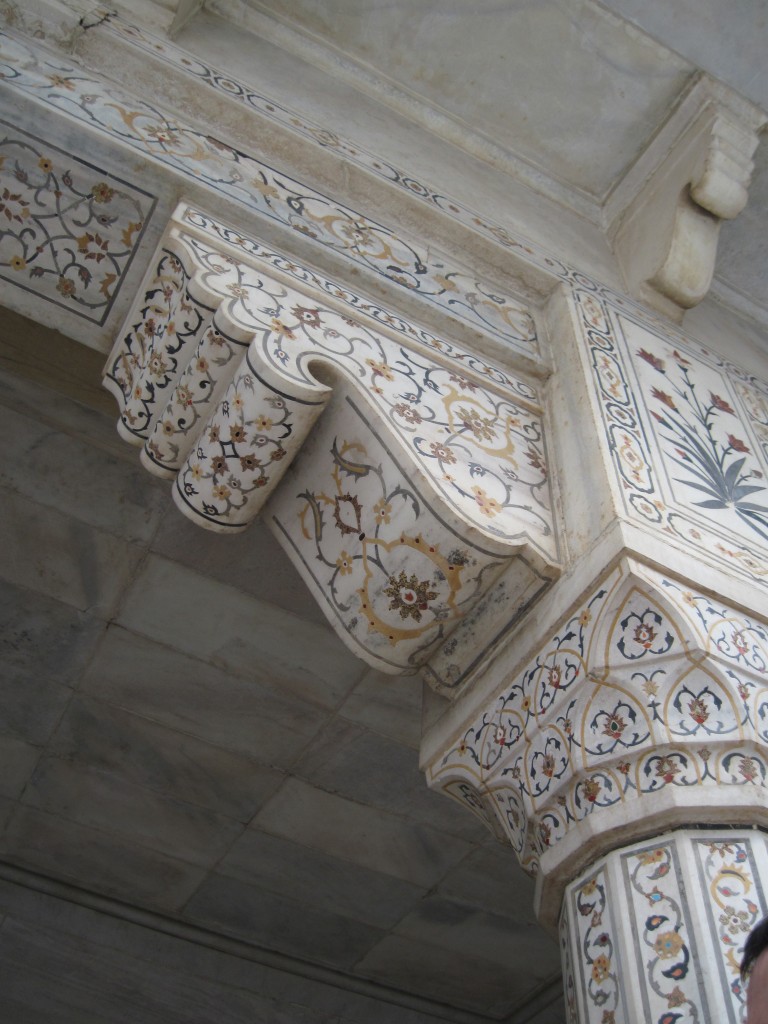
Details of the Empress’ apartments–those are carved precious stones, painstakingly cut and inlaid in the marble. Crazy.
Next up, THE TAJ MAHAL! This was something I’ve wanted to see since I was a tiny kid, and I was positive it would never live up the hype. How could it? Nothing could be as magical as it had become in my head.
It absolutely was. There is something powerful about the Taj Mahal that I can’t quite explain. The symmetry is perfect, the setting is incredible, the geometry and artistry and craftsmanship are beyond description, but there’s something else. Call me gullible, but the fact that this is the only world famous monument that was constructed solely because of love gives it mystery. It’s not a palace, or a church, or a government office, it’s not for protection or to intimidate your enemies. It’s a symbol of one man’s love for his wife. And what a symbol.
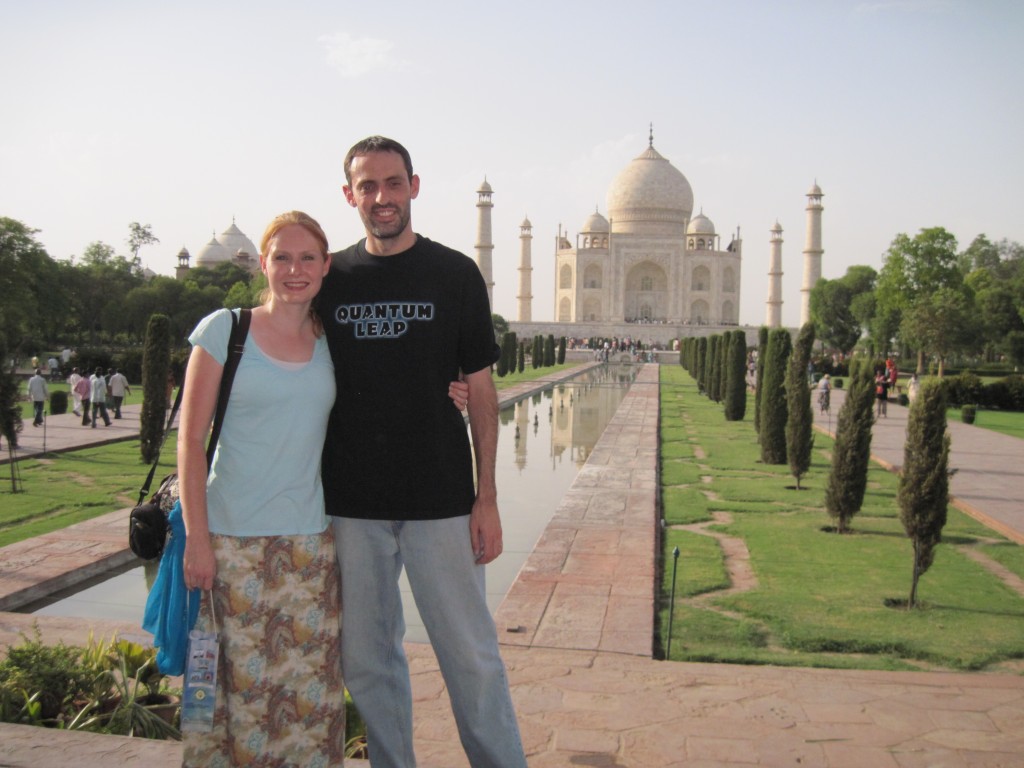 Everything you’ve heard about the Taj is true. The light reflects off the marble in a way that can’t be described, and that shifts in color and balance with every shift in the sun’s angle.
Everything you’ve heard about the Taj is true. The light reflects off the marble in a way that can’t be described, and that shifts in color and balance with every shift in the sun’s angle.
Plus, the fact that it was summer, and off season, and so we were practically the only foreign tourists there didn’t hurt.
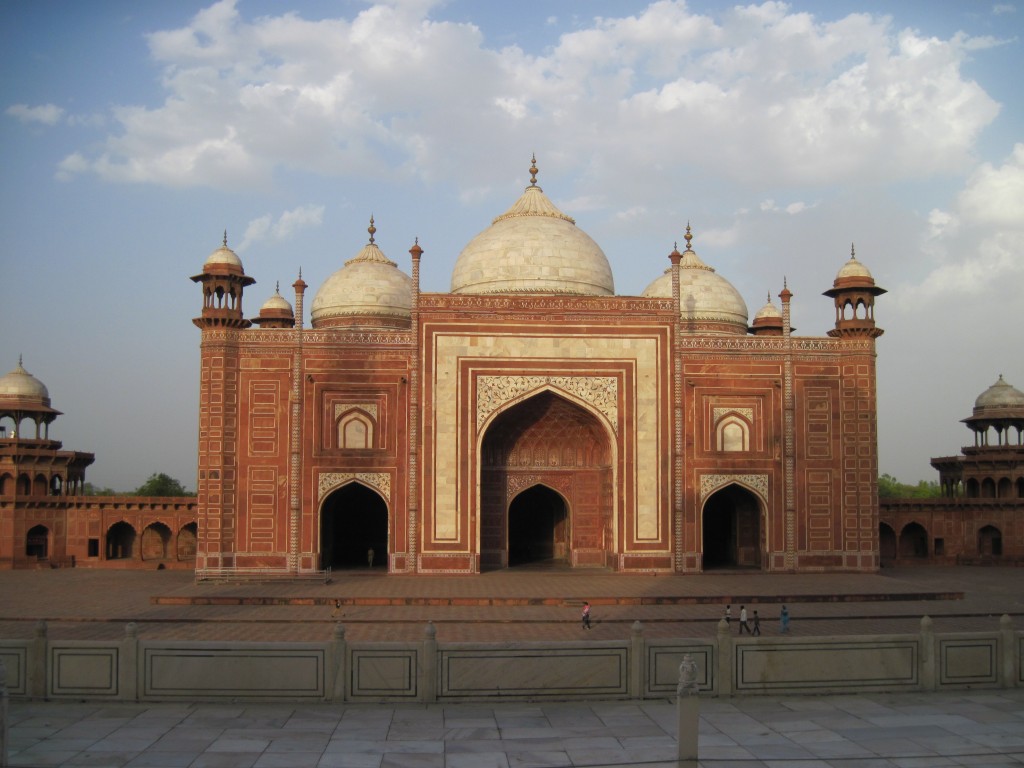
The mosque and guest house were built to flank the Taj and to mirror one another. They’re incredibly beautiful in themselves.
We spent the evening gazing, and taking pictures, and gazing some more. When the park closed at sundown, we headed back to our hotel via a horse-drawn carriage.
The next morning we were up early to catch the sunrise over the Taj Mahal from across the river. This was probably my favorite moment of the whole trip, and the “poster moment” for our fundamental theory of travel, playing like a local. As we approached the river for a view of the Taj, we realized that a group of kids was playing soccer right in front of us. The whole scene was surreal and beautiful, watching children play in front of the most famous monument in the world, completely absorbed in their game.
These are the moments that make you realize where you are, what you are really seeing, and help you see your own world with new eyes. Soccer in front of the Taj Mahal. Of course. It’s absolutely right.
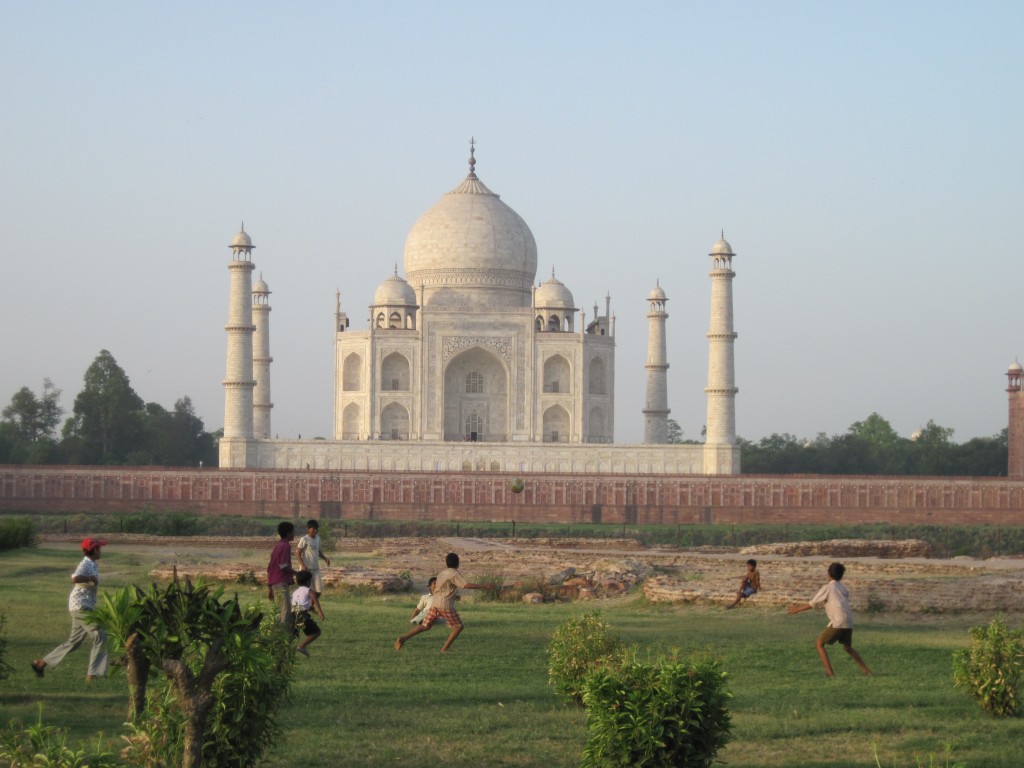 These kids were the source of some of my favorite pictures of the trip. As soon as they noticed us watching, several of them came over demanding a photo. After so many years being dragged into pictures in China, we first thought they wanted a photo with us, but no. They just wanted us to take their picture. For us.
These kids were the source of some of my favorite pictures of the trip. As soon as they noticed us watching, several of them came over demanding a photo. After so many years being dragged into pictures in China, we first thought they wanted a photo with us, but no. They just wanted us to take their picture. For us.
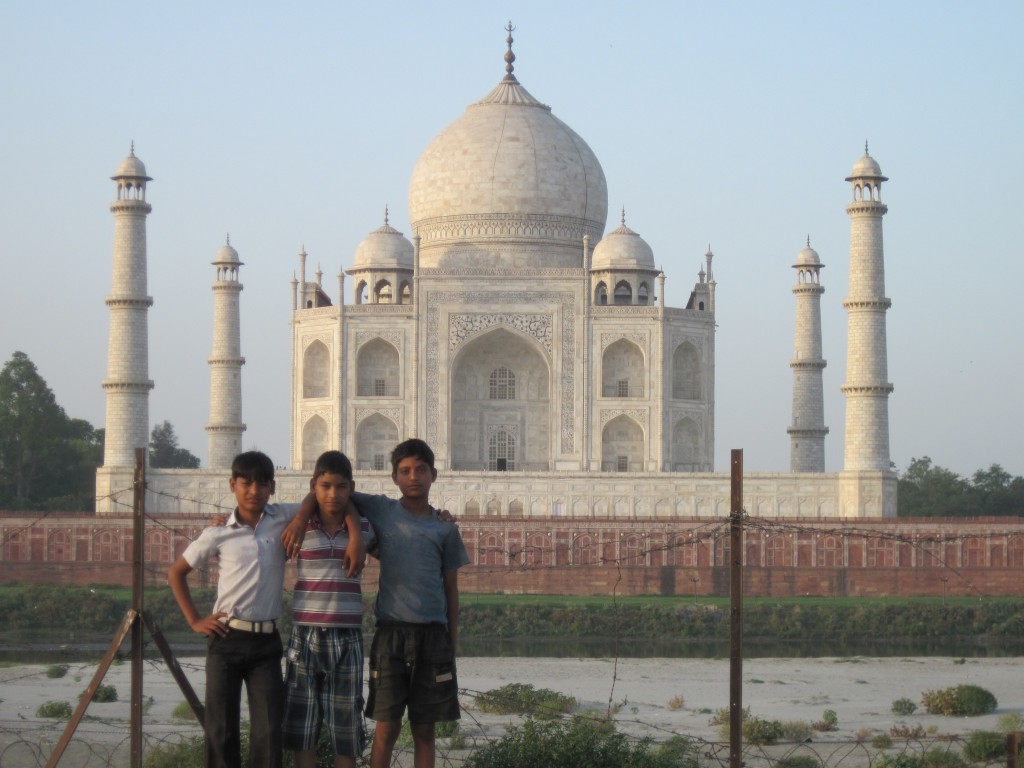 And these kids have obviously spent a lot of time watching foreigners at the Taj. How do I know? Well, there’s this, that we took the day before . . .
And these kids have obviously spent a lot of time watching foreigners at the Taj. How do I know? Well, there’s this, that we took the day before . . .
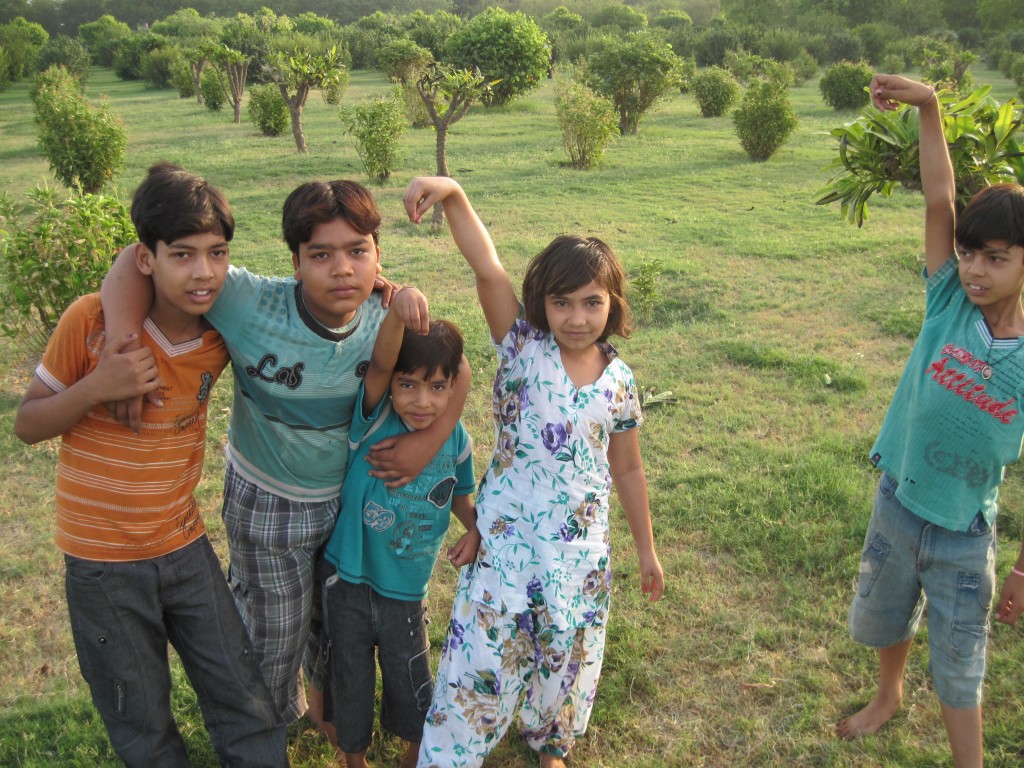 “Why do foreigners always do this in pictures?” I can see them thinking. “Who knows. Americans are crazy.”
“Why do foreigners always do this in pictures?” I can see them thinking. “Who knows. Americans are crazy.”
Possibly my favorite travel picture ever.
The rest of the day was spent shopping local markets with a dear friend who had recently moved from Beijng to Delhi, and enjoying a delightfully cheesy evening at “Bollywood Disneyland” aka Kingdom of Dreams, where we had dinner, did some shopping and enjoyed a mock Bollywood wedding before we set off for the airport and our flight back to Beijing.
For anyone thinking about traveling to India, I absolutely encourage you to go, and if you can, to go with Elegant Journeys. It was a magical three days, and everything we hoped it would be.
|
Need to Know Before You Go |
|
| Visas needed? (US Passport holders) | yes |
| Best time to visit | Oct-Apr |
Want more? Read our other trip reports here!
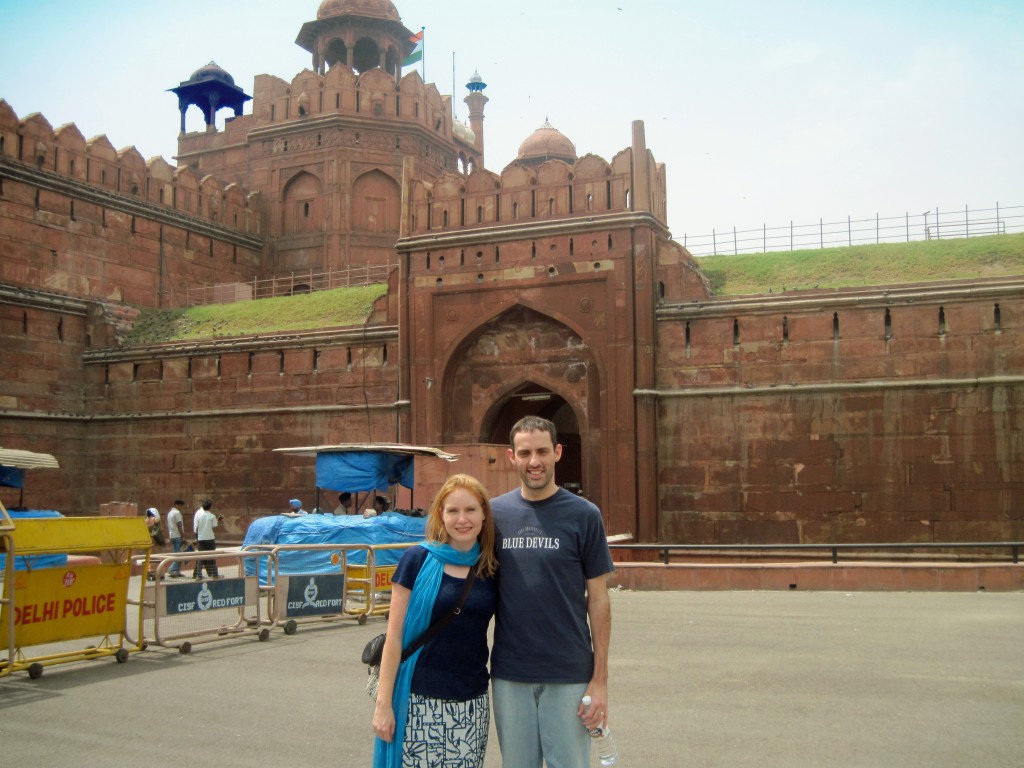
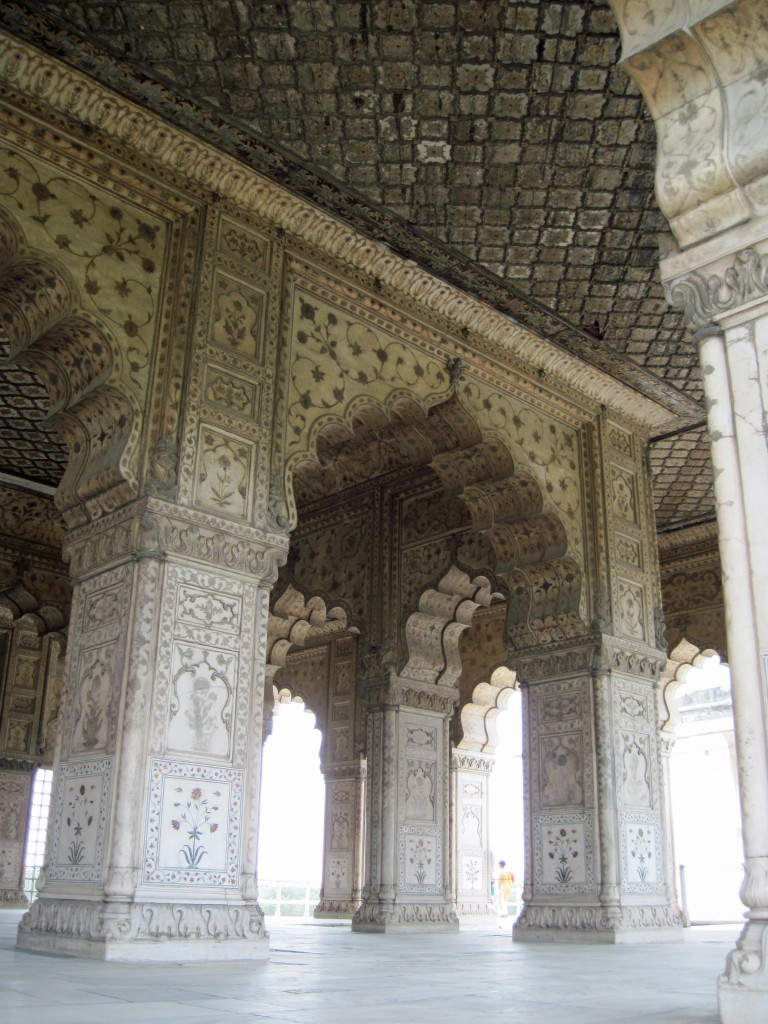
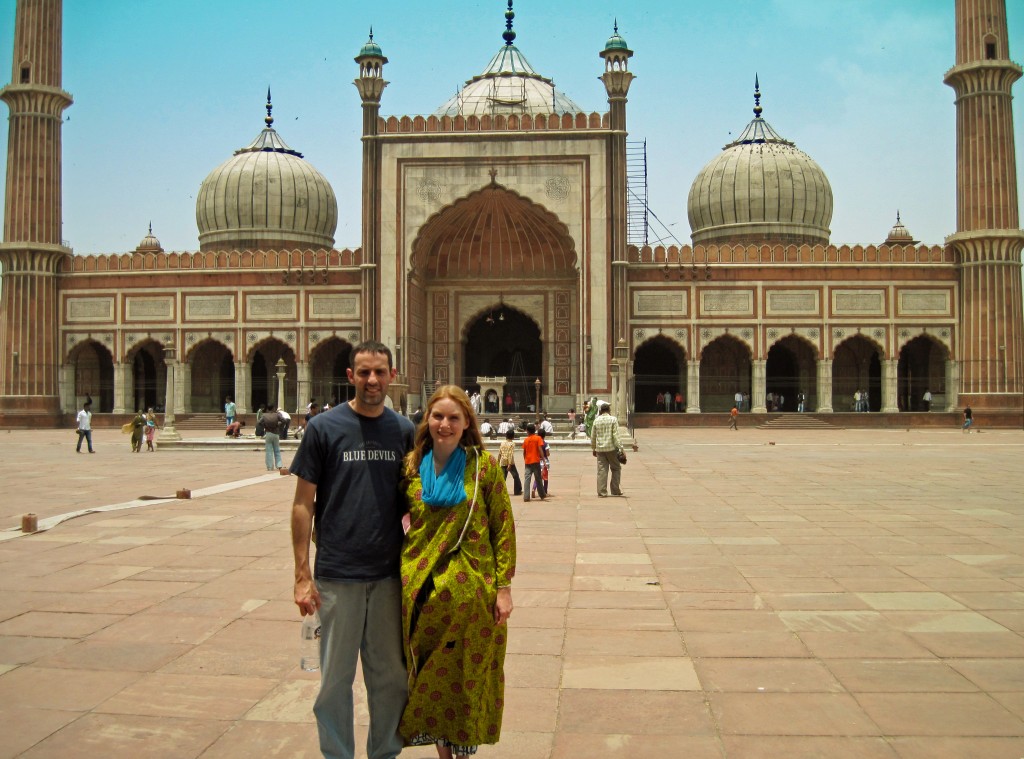
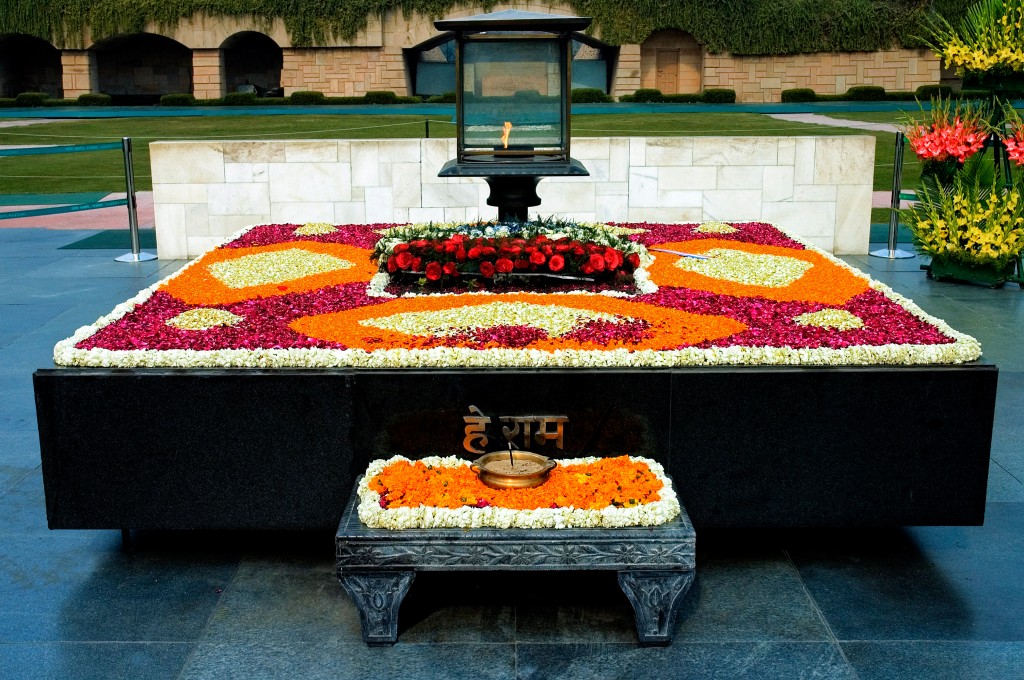
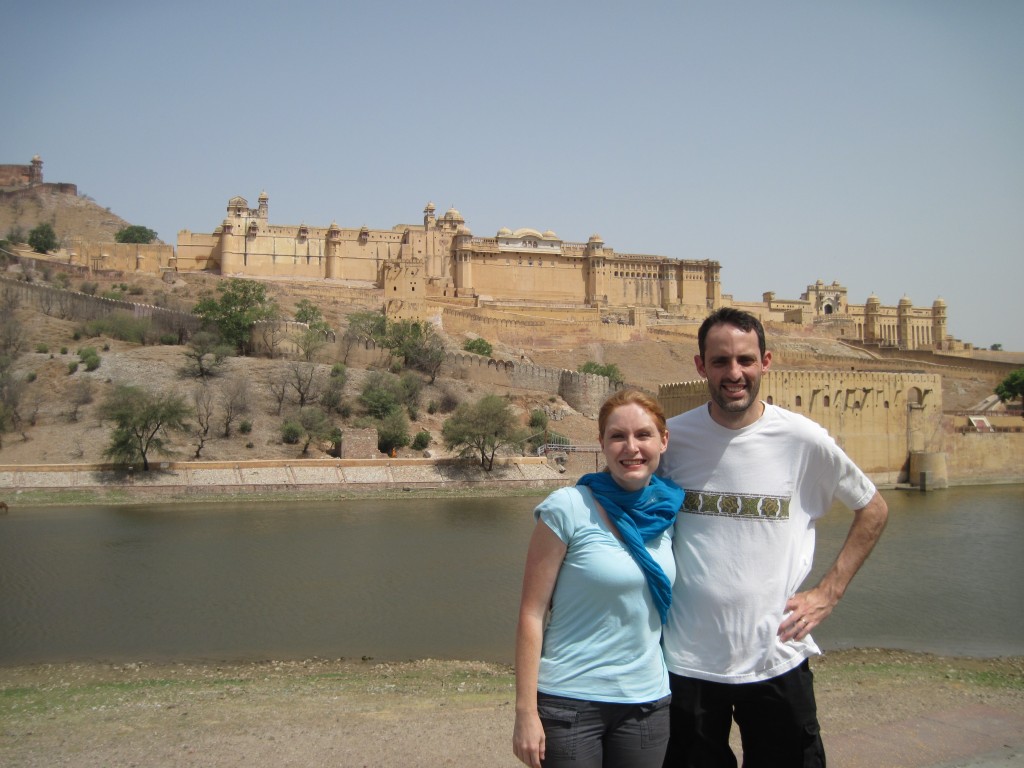
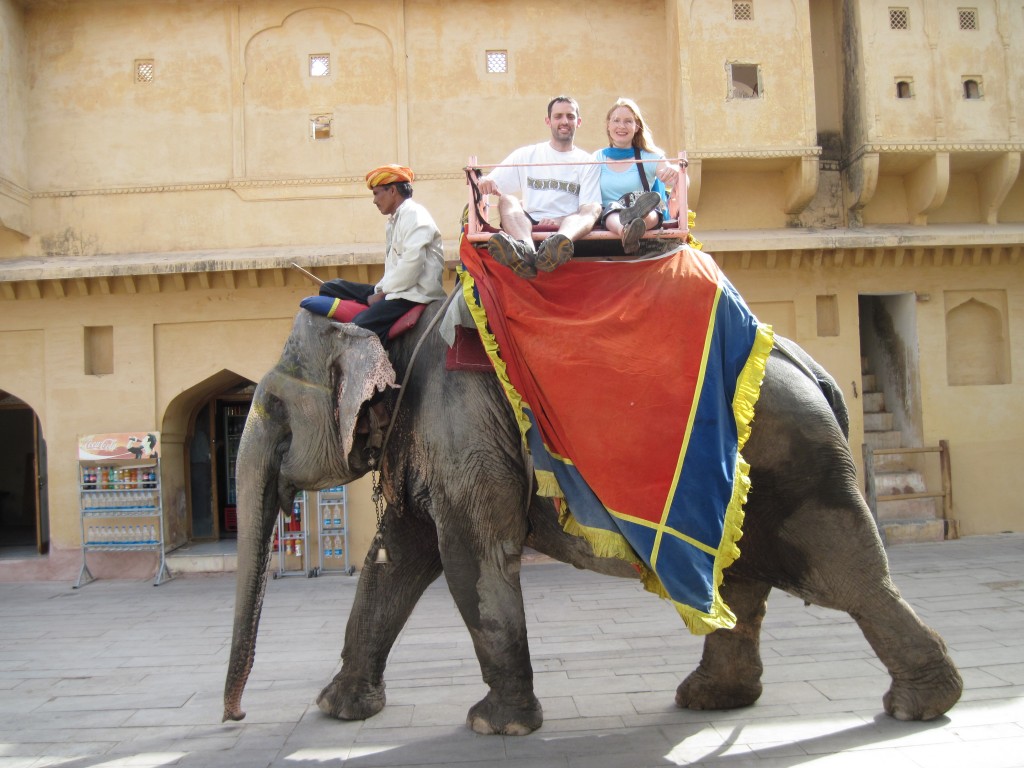
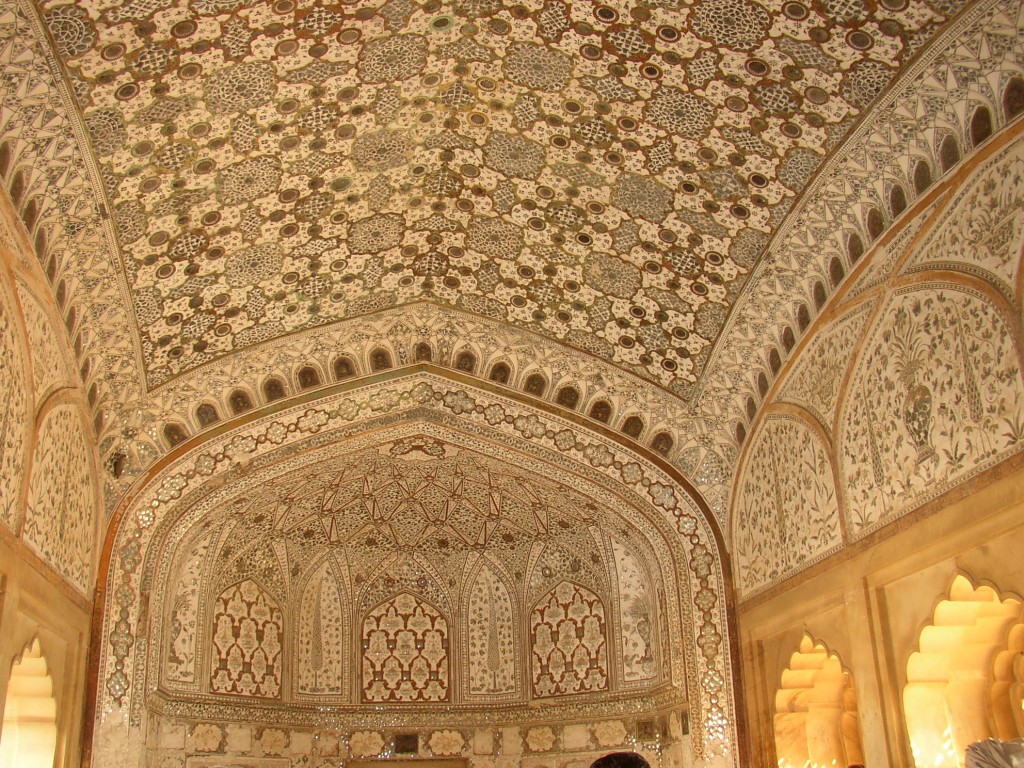
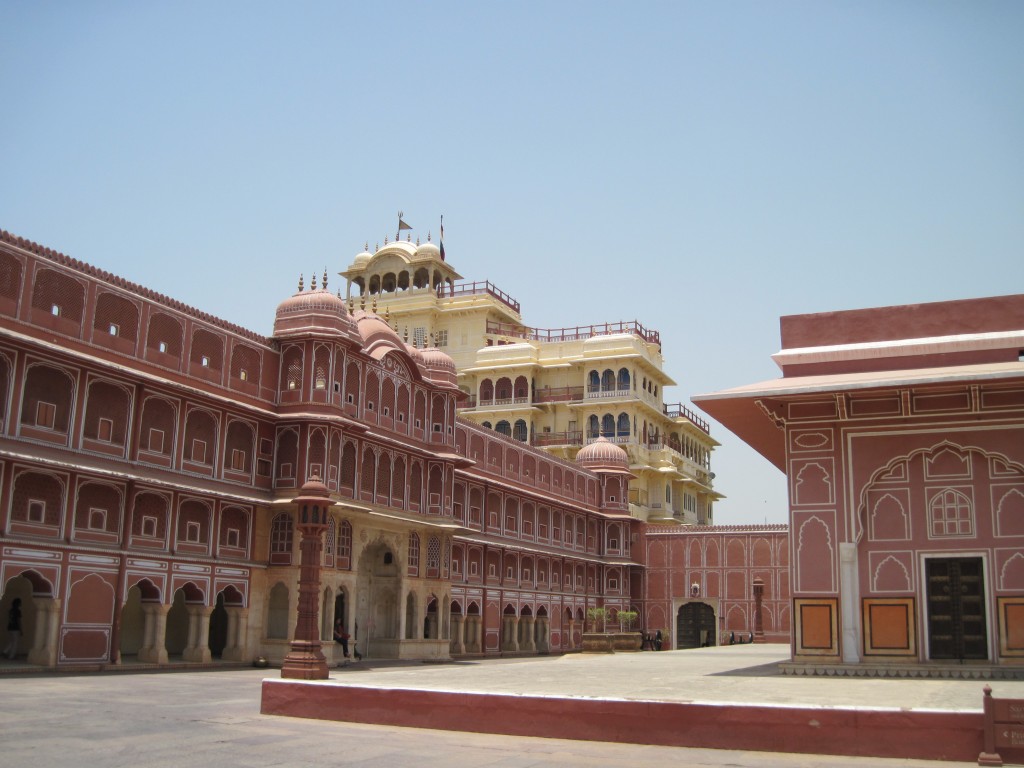
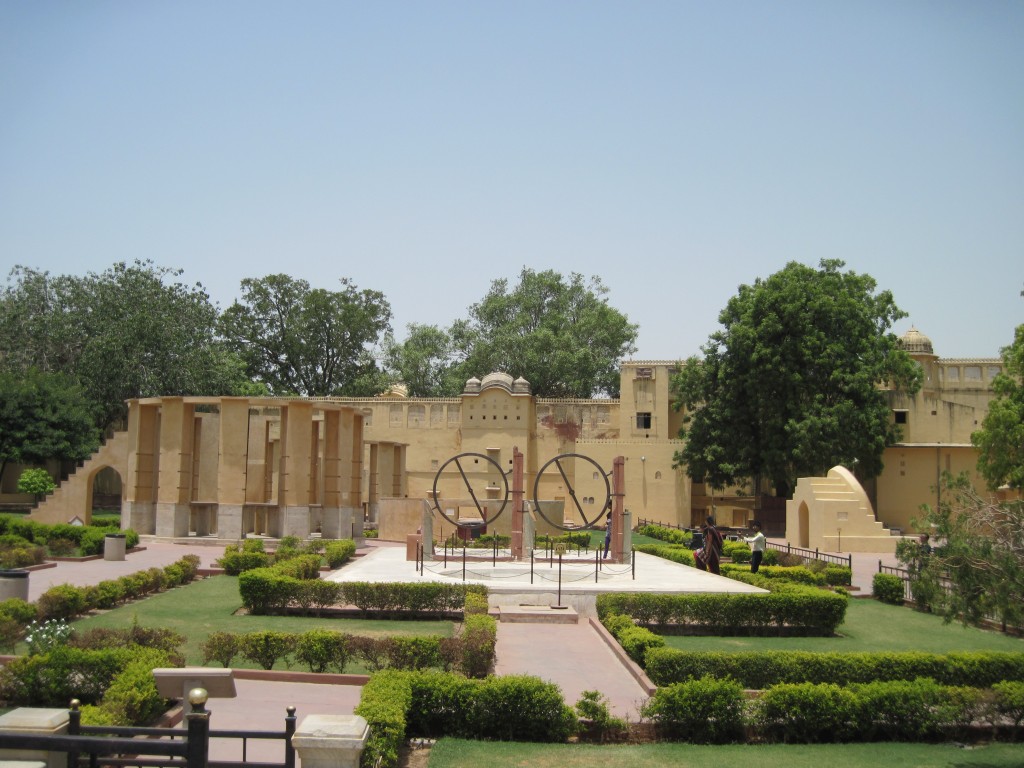
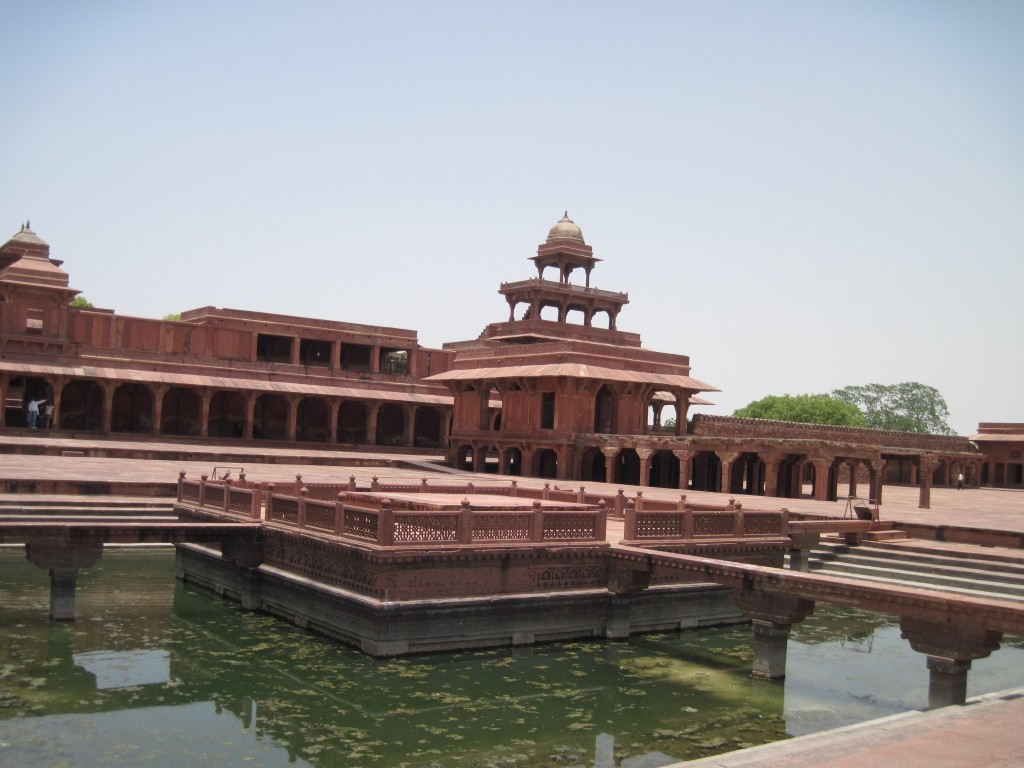
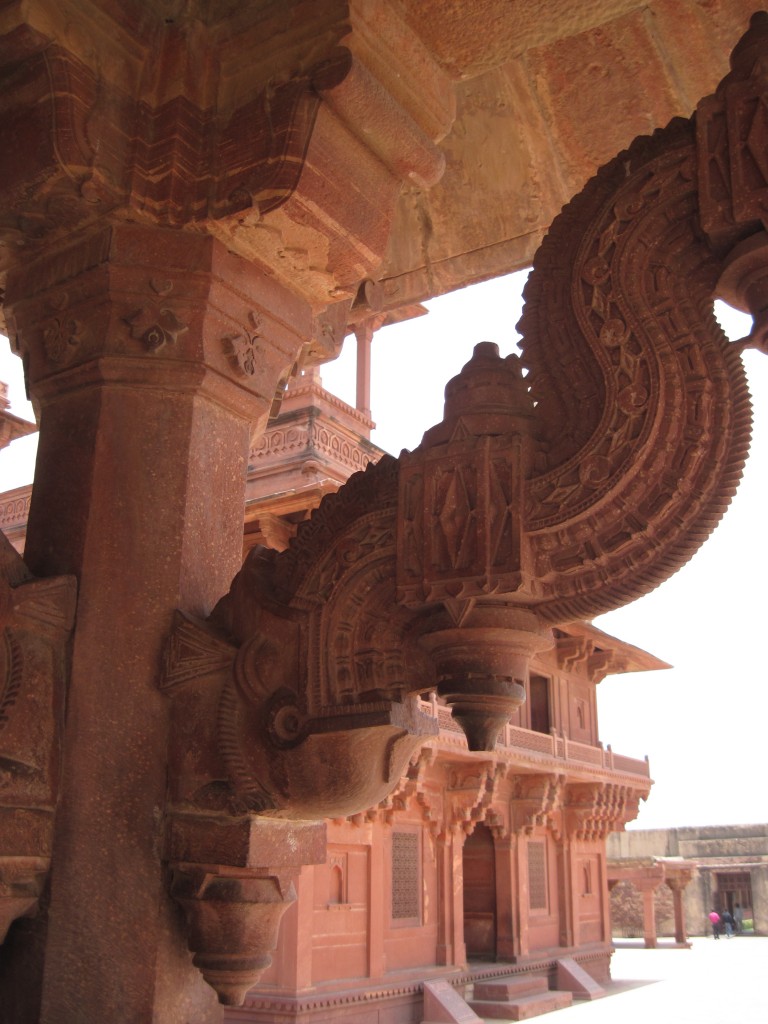
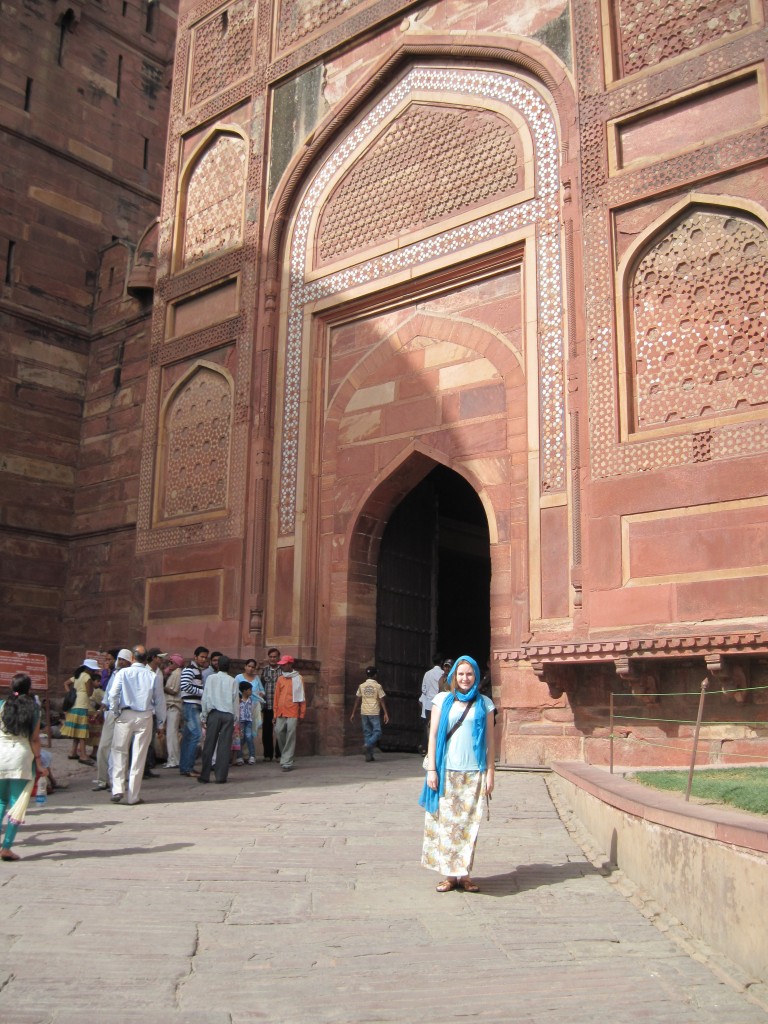
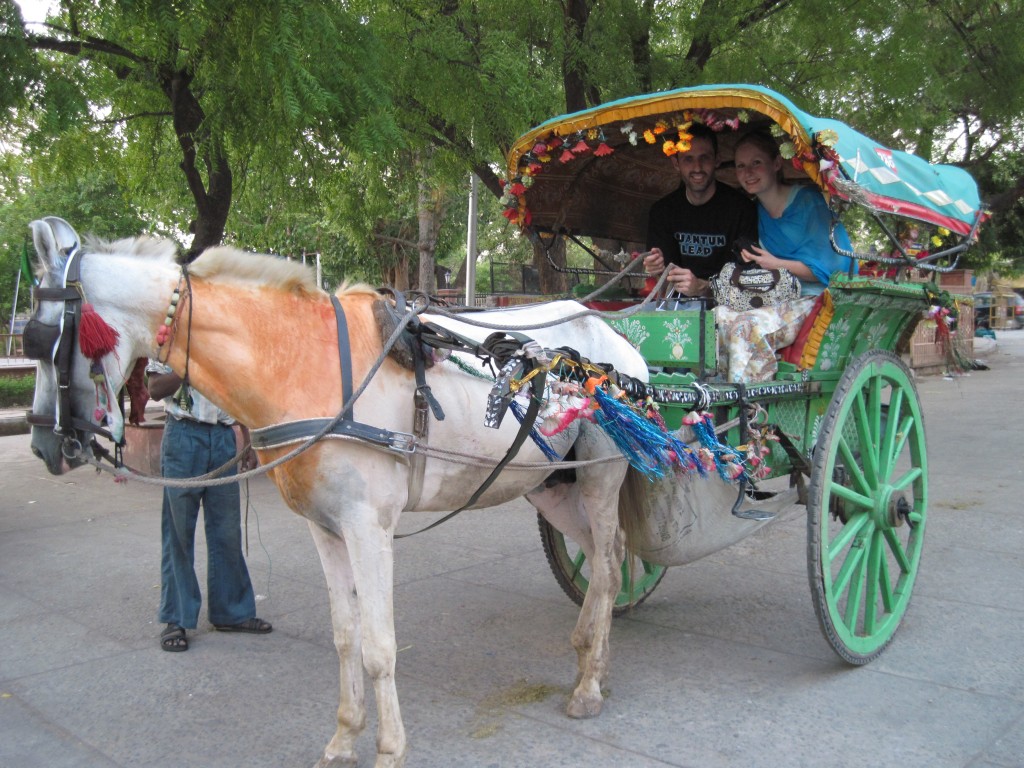

I got my first chance to travel abroad last year and each time I check out your blog it has me itching to travel more. Beautiful pictures. Thanks for sharing your adventures.
Good! That means it’s working 🙂